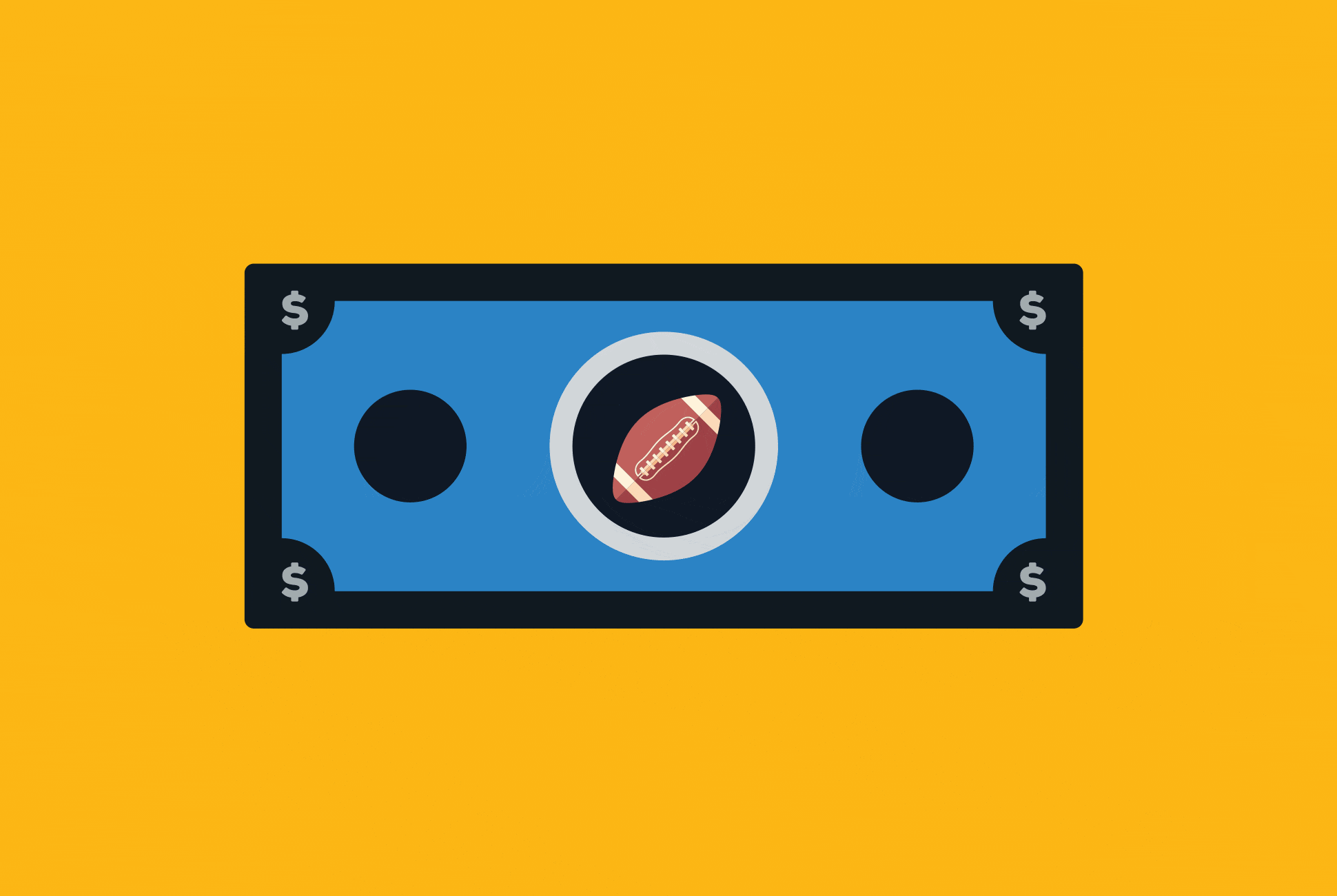Action: a bet
Book: a sports betting establishment
Bookie: someone who takes bets; also called a “bookmaker”
Chalk: team predicted to win; the favorite
Dime: $1,000
Dollar: $100
Fifty cents: $50
Handle: total monetary value of the bets taken
Hedging: placing money on multiple options in order to minimize loss
Juice: bookie’s commission on a losing bet
Line: the odds or point spread on a given event
Money line: a bet placed on the outcome of a game, regardless of the spread
Nickel: $500
Oddsmaker: person who sets the lines, typically employed by a large casino or offshore book
Over/Under: a bet placed on the fact that the sum final score will be over or under a preset number
Parlay: a bet involving multiple teams in which all teams must win for the bettor to get money; in exchange for the extra risk, the bettor receives a higher payout
Prop (proposition) bet: a bet placed on a certain unique topic
Spread: predicted scoring differential between two teams
Underdog: team predicted to lose
The first thing to know is how the betting process works. It starts with oddsmakers, professional sports analysts who work for big casinos or offshore books. They examine performance reports, advantages, disadvantages, injuries, morale, personal stories, and even the weather to establish lines — the odds set for the outcome of any given event. When setting the lines, oddsmakers try to keep equal numbers of bets on both sides. That’s how they make money. If one side gets too many bets, they’ll move the line to even things out, though if someone places a bet before the move, he keeps the original line.
Most outlets offer numerous ways to bet — we’ll cover the four most popular options for beginners. Before we continue, please note that Gear Patrol doesn’t encourage gambling, or advocate for any specific team, and that we’re not responsible for any losses except our own.
Betting the Spread
First, one can bet on the spread. According to bleacherreport.com, the spread at the time of this article’s publication was +3 for the Seahawks and -3 for the Broncos, where (-) indicates a chalk (favorite) and the (+) indicates an underdog. So, if one picks the Seahawks to win, and he wants to make money, the Seahawks would have to win or lose by less than 3. If one picks the Broncos, they’d have to win by more than 3. When betting the spread, it’s important to realize that you can still win money even if your team loses, or lose money even if your team wins, because you’re not betting on a win or loss…you’re betting that the team beats the spread. If the Seahawks were to lose by three exactly, the bet would push — you get your money back.
How much money does one win? That depends on the line. In every casino or on every betting site, you’ll see a number next to the spread, always preceded by a (-) or a (+). That’s the line. Let’s say you’re dealing with $100. A (-) before a number means that you lay that amount to win $100; a (+) means that you lay $100 to win that amount. At present, for the Super Bowl, the spread and line for the Seahawks are +3(-115), and for the Broncos they’re -3(-105). So, if you want to take the Seahawks, and you lay down $115, and if they win, or lose by less than 3, you get $215 — the original bet, plus $100. If you want to take the Broncos, and you lay down $105, and if they win by more than 3, you get $205.

